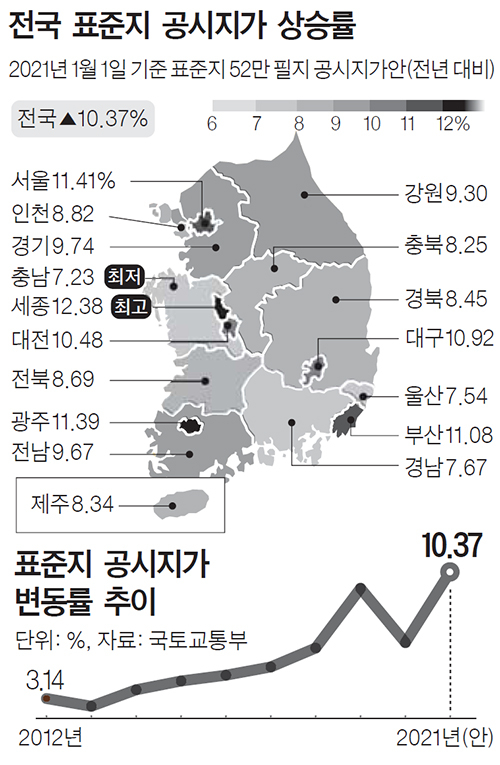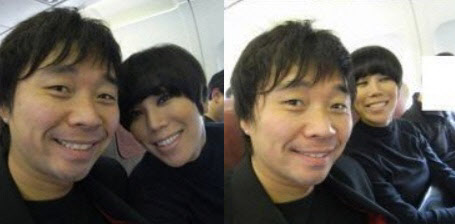The official land price of standard land, which is the basis of taxation such as real estate ownership tax, rises the most in 14 years. On the 23rd, the Ministry of Land, Infrastructure and Transport announced that as of January 1 of next year, the rate of increase of 520,000 parcels across the country was 10.37%.
The highest rate of increase in 14 years… Sejong 1st place
Seoul is Gangnam, Seocho, and Yeongdeungpo in order.
Myeong-dong Nature Republic 200 million won per ㎡
– It is the highest increase rate in 14 years since 2007 (12.40%). The increase is larger than last year (9.42%), when the Moon Jae-in administration raised the rate of increase by saying that it would make the publicly available real estate price a reality.
The standard land is a representative land that serves as the standard for calculating the official land price of 3,398 million individual lands nationwide. Owners’ viewing and hearing of opinions on the publicly announced land price will be held for 20 days from the 24th of this month to the 12th of next year.
Last month, the government announced a’plan for real estate public price realization’. It is planning to raise the public price of real estate such as apartment houses, single houses, and land to 90% of the market price over 15 years. The published price is used as a standard indicator in 60 fields, including real estate ownership tax (property tax and comprehensive real estate tax), gift tax, health insurance premium, and development charge.
The rate of increase in publicly announced land prices in national standard sites
– When the quoted price reflects higher rates, the burden of taxes and insurance premiums increases. For land, the market price reflection rate increases from 65.5% to 90% in 8 years. It is applied collectively regardless of the purpose of the land, such as residential, commercial, and forest.
According to this plan, the rate of realization of the published land price next year will be 68.6%. The rate of increase in the publicly announced land price of the standard land announced this time is 68.4%, similar to the plan.
The increase rate by region was highest in Sejong at 12.38%, followed by Seoul (11.41%), Gwangju (11.39%), Busan (11.08%), and Daegu (10.92%). In Sejong City, land prices are expected to rise in anticipation of development as the capital relocation this year rises on the cutting board. In Seoul, Gangnam-gu (13.83%), Seocho-gu (12.635), and Yeongdeungpo-gu (12.49%) rose a lot.
The rate of increase by use was in the order of residential (11.08%), commercial (10.14%), agricultural land (9.24%), forestry (8.46%), and industrial (7.56%). The Ministry of Land, Infrastructure and Transport said, “The property tax on land is at the level of 0.07% (separate taxation) for farmland, so the increase in property tax due to changes in the publicly announced land price will not be significant. According to the Ministry of Land, Infrastructure and Transport, if the publicly announced land price of shopping centers in Seoul (76㎡) rises 4.26% from 980,400,000 won last year to 1,022.2 million won this year, the property tax rises 150,000 won to 3.34 million won.
Meanwhile, Nature Republic, Myeong-dong, Jung-gu, Seoul, has maintained the No. 1 position for 18 years, the most expensive standard paper in the country. The official land price per ㎡ is 26.5 million won, up 3.77% from this year.
Reporter Choi Hyun-joo [email protected]
–


